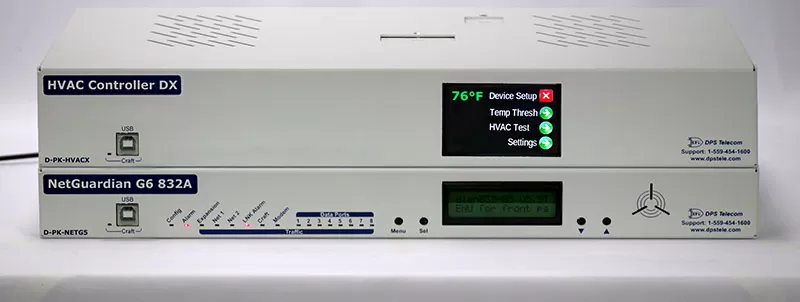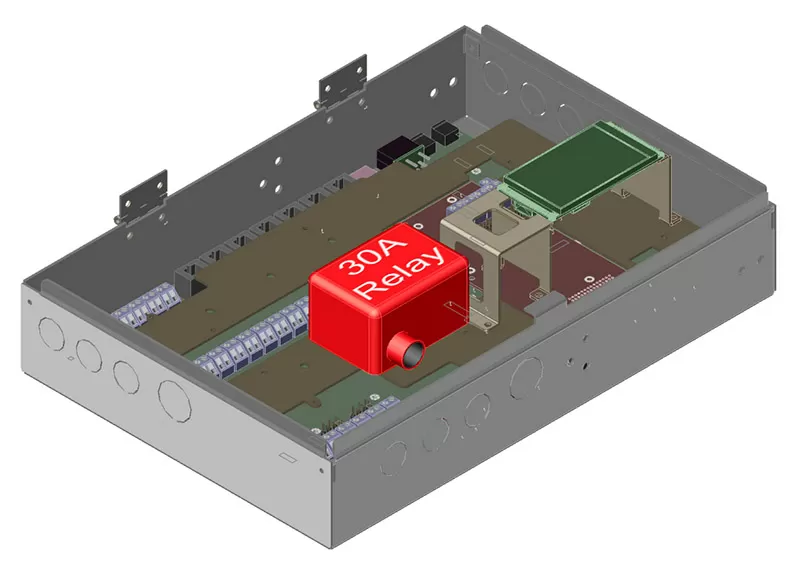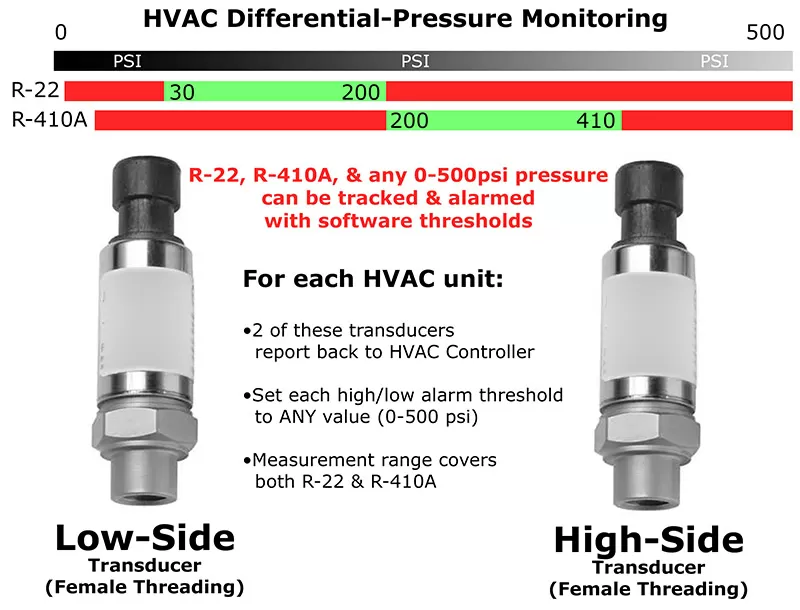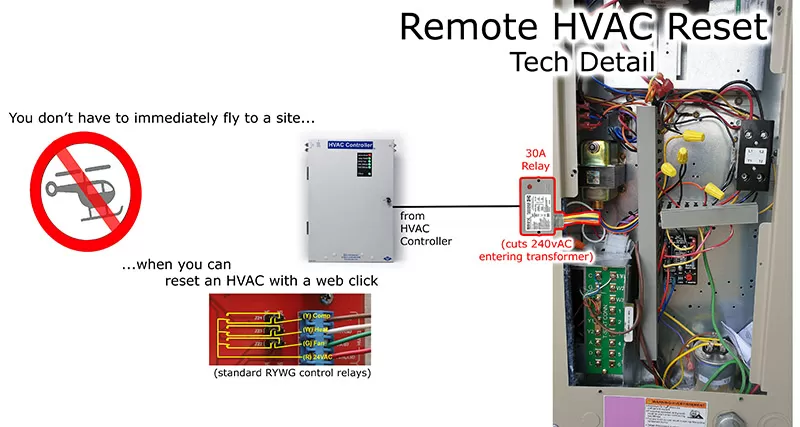Check out our White Paper Series!
A complete library of helpful advice and survival guides for every aspect of system monitoring and control.
1-800-693-0351
Have a specific question? Ask our team of expert engineers and get a specific answer!
Sign up for the next DPS Factory Training!

Whether you're new to our equipment or you've used it for years, DPS factory training is the best way to get more from your monitoring.
Reserve Your Seat TodayIn the last few weeks, I've quoted perhaps the most comprehensive monitoring system DPS has ever developed. Let's review the value of multi-functional equipment, then go over this specific example. It will either be directly useful for you or an inspiration for the semi-custom device that you do need.

If you've read much of my writing, you know how to get the best value from any equipment, including DPS monitoring gear. You get maximum value when you can accomplish multiple functions with one box.
This is all thanks to a simple economy of scale: every box needs a power supply, an aluminum chassis, and a circuit board. If you want a "two in one" or "three in one" device, you don't have to pay for those hardware basics a second time.
Even a "stack" of devices can economize on processor, with one device calling the shots and the others requiring fewer components. This also reduces IP proliferation with a stack that's recognized as a single network device.

Aside from our T/Mon master station, NetGuardian RTUs are the original DPS product line. As you know, RTUs are general-purpose monitoring devices that collect alarm data in various ways: whether using contact closures, analog voltage/current, or modern protocol communications.
The client who approached me for this project is a long-time user of our NetGuardian line. Fortunately, my recent writing and videos about newer DPS products had led this client to discover our newer HVAC Controller.
The HVAC Controller has already been through two generations. The first had a two-line LCD display (simple text) that we've used on NetGuardians before. The new "G6" model (named to align it and other models that share the NetGuardian 832A G6 platform) has a full-color LCD touchscreen.

The client had also seen our BVM ("Battery Voltage Monitor") device. Now in its third generation, the BVM G3 has evolved to monitor the voltage, temperature, and internal resistance of each and every battery in a string.
Like my client here, you might have interest in accomplishing general remote monitoring, smart HVAC control, & continuous battery monitoring in one box. But how do we accomplish that?
Let's now take a look a the solution stack I put together for this client. As I noted in my proposal letter:
- This quote is now focused only on the hybrid RTU+HVAC+BatteryMonitor system.
- The "HVAC Expansion" is now a wall-mount unit (visually nearly identical to standalone HVAC Controller). I added 8 discrete inputs to this device to add wiring convenience for you. The move to the wall (with a presumed wire length of perhaps 30 feet back to the RTU) required the minor addition of some extra RS232 communication.
- The RTU is now a NetGuardian G6 420, a similar but smaller-capacity variant of the G6 832A.
- I have reduced the optional trade-in discount, as I understand you want to keep your 832A G5 units in operation and only consider trading in 216 G3 NetGuardians.
There's quite a bit to discuss here:

As you know, a good purchase decision at work can be a great boost to your career prospects. A bad purchase decision might just force you into an unplanned departure.
That's why you should really focus on ways to minimize risk - which helps both your company and you personally.
Common risk-reduction techniques include:
In particular, a money-back guarantee is your ultimate safety net. If you have the ability to get all your budget dollars back, you're safe against almost any peril. Nobody gets fired for spending a few dollars on shipping to return a product for a full refund.
A warranty is a longer-term version of the same safety net - although one that is more limited than a full return policy.
A provable history of success decreases the chance that you'll ever need to use a guarantee or warranty. Even though you want those as a stopgap measure, it's always best if you never need them. Buying a working solution first is always much better.
My client knew all of this - and that it mattered to his management group. That's why I wrote this into my proposal:
DPS offers a flexible trial period to eliminate risk for you:
Every purchase from DPS, including a first article for this project, is covered by our standard 30-day guarantee by default. If something doesn't work for you, your only out-of-pocket cost under this policy is the return shipping. As we've discussed, we're happy to extend this offer for a full 45 days or more to give you enough time to evaluate the HVAC Controller and request firmware changes from the DPS engineering team. Just stay in contact with us during the evaluation period. If we're actively working together to make you a perfect-fit product, we'll grant you any reasonable extension to the trial period.
Your purchase is automatically covered by our 2-year hardware warranty and lifetime firmware updates. For full details on these policies, see the last few pages of this proposal.
If your time is worth nothing, you CAN actually save a bit of budget by purchasing all of your own accessories. In a remote-monitoring context, that means purchasing auxiliary sensors from a separate vendor than your RTU (including the HVAC Controller in our example here).
Fortunately, your time is worth something. That's why, within reason, you should accept small vendor markups if it means you can buy everything in one place.

Additionally, you'll be benefiting from vendor expertise and their experience with the many available sensor options. You may not have ordered many remote-site sensors before, but your remote-monitoring vendor certainly has. Leverage that.
That's the advice my client here was following. Here's a snippet of my sensor & large-capacity relay descriptions:
As we've discussed, the HVAC Controller proposed here is a smart lead-lag controller that will manage 2 HVACs with rotation lead/lag roles.
I have once again refined this proposal to better reflect your project requirements:
- I have added another external relay with 10A capacity: one will now control your baseboard heater, while the other will easily cover your 5A requirement for your crossflow damper actuator and inlet fan. I updated the drawing to reflect this. This will enable our standard 1A relays on the HVAC Controller to effectively control your crossflow system (within the limits you've established for the sake of redundancy).
- I have added two pairs of differential pressure sensors as you specified. These have the female threading to mate with your HVAC units. The covered analog measurement range is appropriate for both the R22 & R410A standards.
It would certainly be great if the first draft of a project proposal was perfect, but that generally won't happen.
A big reason why is that a proposal document draws in new eyes, opinions, and feature requests. A good manufacturer/vendor will be responsive to new input, since it will ultimately create a stronger result.
I, for one, love to field new requests from members of a client team. When I'm able to deliver what they ask, I'm gaining new fans. That helps to strengthen the relationship, leading to more client success and future sales for me.
Take a look at this long excerpt from my proposal letter that reflects this commitment to making important revisions:
(Information from the previous revision of this proposal):
I'm pleased that the reliability of our NetGuardian devices has earned us an additional opportunity to help you further optimize your service reliability and operational efficiency.
I understand that you need:
- Flexible HVAC control using custom temperature thresholds for HVAC(s) with optimizers.
- Excellent monitoring of temperatures, air flows, power consumption, and outdoor air temperature. Your crossflow system must also be monitored.
- Control of your baseboard heater.
The system I've quoted here:
- Includes our HVAC Controller, the central monitoring & control device for each of your sites. You'll have a moderate excess of I/O capacity, so you many not need a NetGuardian at smaller sites where you deploy the HVAC Controller.
- Includes an array of sensors that feed data back to the HVAC Controller to support good automated decisions.
- Controls your external equipment (up to 12) with its relay outputs.
Additional notes:
- I will be continuing to work with you on refining this proposal. I expect to be adding a final architectural drawing based on your feedback. We will also be examining minor adjustments to equipment, such as a new +24 VDC variant of the HVAC Controller that would reduce the price of the AC transformers and properly capture wet 24V contacts instead of dry contacts. I also will look for an AC current sensor that is more finely tuned to your typical 0-30A HVAC consumption. Nonetheless, this first quote provides a good order-of-magnitude price estimate for you.
- Although this initial quote is just for one "maximum specs" site, I understand that there are potentially many different sites of interest in this project. We want to make our system a perfect fit for you, and I expect that this project will have enough scale to justify free customization. I know we are looking at some firmware adjustments to ensure you have manual override control of relays, among other things. From an install perspective, let's push toward a device that practically jumps out of the box and installs itself. A custom install guide for your sites, pre-loaded config, pre-loaded IP, and other options are all possible to make your job faster and easier.
Since you found this article, you might just be in the market for a good HVAC Controller. Maybe you need something a little bit different. Maybe you need something A LOT different.
Just tell me what you're trying to accomplish. I'll find a solution that does the job. Generally, I'll be hand-picking from the extensive DPS product lineup. When needed, I can bring the DPS Engineering Department to bear on whatever tricky challenge you bring me.
To get started, just give me a call at 1-800-693-0351 or send me an email at sales@dpstele.com
I look forward to working with you.

Andrew Erickson
Andrew Erickson is an Application Engineer at DPS Telecom, a manufacturer of semi-custom remote alarm monitoring systems based in Fresno, California. Andrew brings more than 18 years of experience building site monitoring solutions, developing intuitive user interfaces and documentation, and opt...